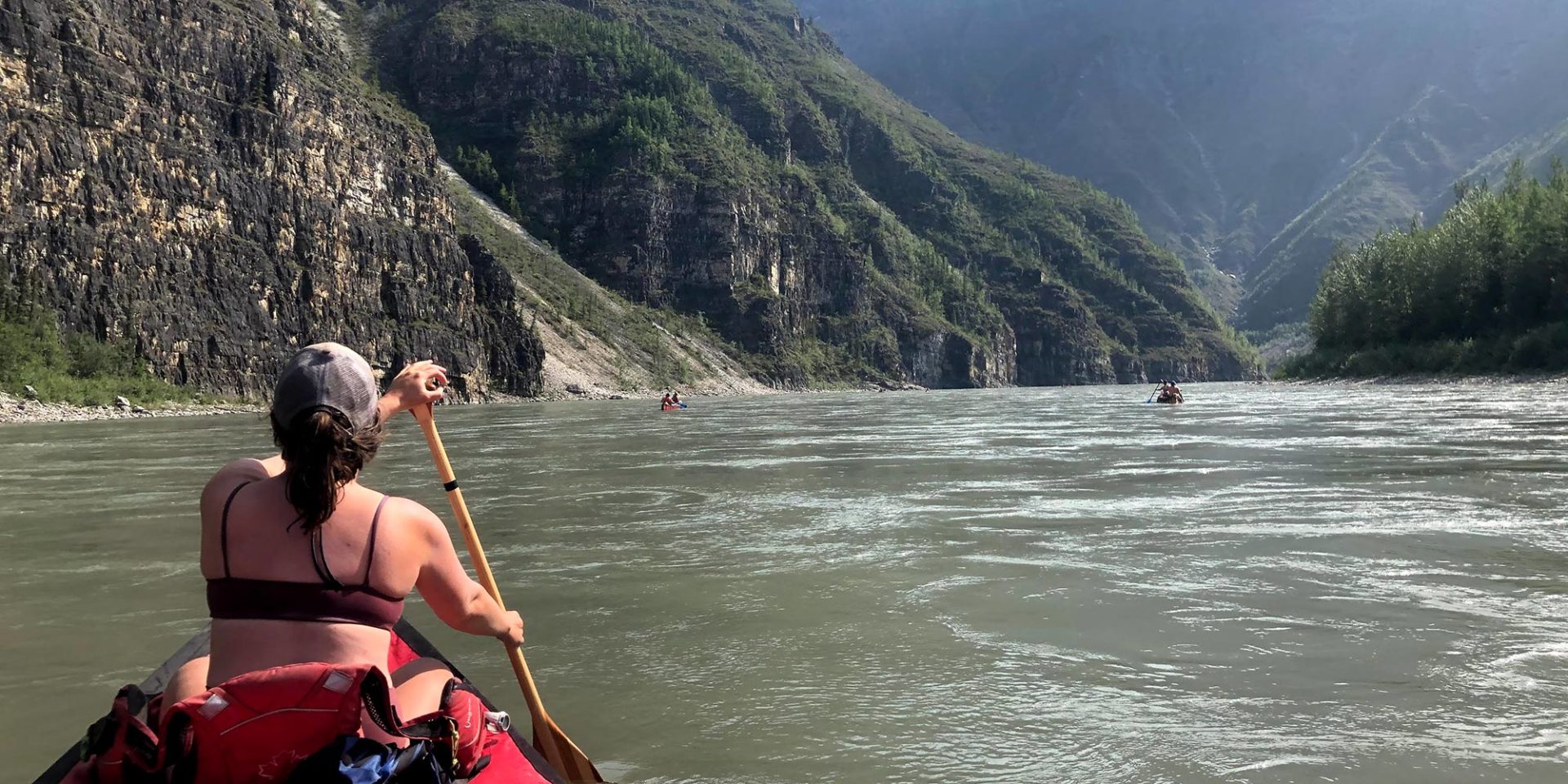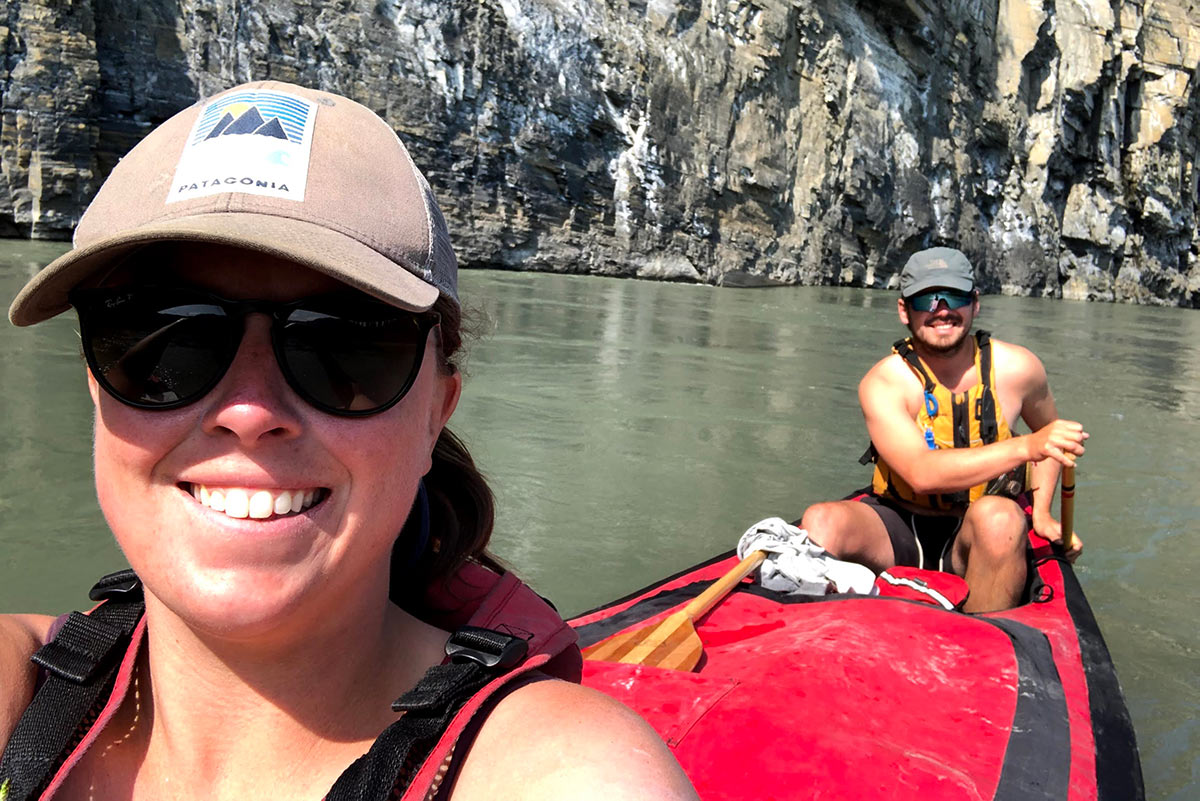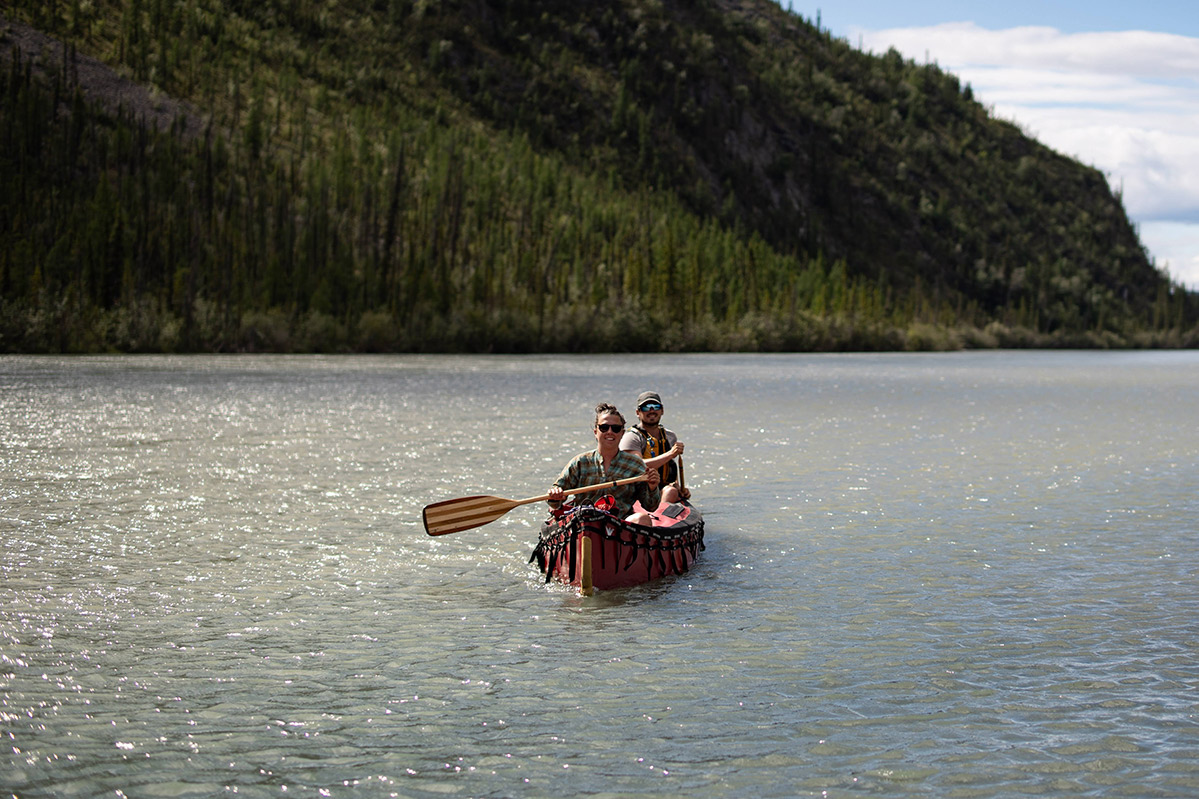
Northern canoeists Aimee Guile and Nathan Ensing share their story of preparing for a canoe trip on the Nahanni River. Together, the two are passionate about paddling the wild rivers of the Northwest Territories. They’ve run successful self-guided canoe trips on the South Nahanni River, Broken Skull River, Cameron River & Beaulieu River.
*Water levels are a big factor for the difficulty of any river. Generally, higher water makes for more difficult paddling. This interview is based on Aimee & Nathan’s trip in summer 2019 at average water levels on the Nahanni River.

In the spring of 2020, we had a chance to sit down with Aimee & Nathan and ask them a few questions about their experience of canoeing the Nahanni River for the first time. Here is what they had to say.
Thanks for taking the time to chat with us. Could you introduce yourselves by telling us a bit about your paddling past?
Nathan: I grew up in Ottawa. I did a bit of flatwater paddling growing up but didn’t really get into paddling rivers until I moved to Yellowknife.
Aimee: I was raised in Yellowknife – wasn’t really raised canoeing but I got into it in my early twenties.
Why did you guys choose to do canoe trip in Nahanni National Park? What attracted you to the Nahanni River to the point you went “hey – we are going to paddle this river!”
Aimee: Growing up I always heard of the Nahanni River and knew of people who had paddled it. In a way it’s the one canoe trip that people outside of the territory know about. Then you look at pictures, and how could you not want to go. We had also been told that it was a good choice difficulty-wise. We needed some training, but didn’t need to be an expert.
Nathan: It’s always been a bucket-list thing for me. The more research I did the more doable it seemed. We thought – we’d try it out!
Once you decided you were going to paddle the Nahanni National Park – I’m interested in how you transformed that dream into a reality. Could you take us through your trip preparations – step by step?
Aimee: The first step was to find some friends to join us. We had a meeting in a bar, had some drinks and decided: we could make this happen. From there, the biggest thing we know we had to prepare was to improve our paddling skills so we signed up for a Canoe Expedition Course.
On the course, there were six of us and we went down to the Kakisa River. We spent two days down there; it was awesome. It feels like the water level ended up being perfect that weekend. We’ve tried to go back in years since but it’s been too low. We had a mix of skill levels in our group; we started with the basic strokes. Then we covered a variety of rescues and had a chance to work on whitewater knots. We ran some rapids, it was great.
Otherwise, we dehydrated all of our canoe trip food ourselves…which was more of an undertaking than we anticipated. Not having done that for such a big trip before but it ended up working out. Then we had to book the air charters into Nahanni National Park and figure out how we were going to get to Fort Simpson, and get our boats back.

Many folks wonder about difficulty in on the Nahanni River. It’s a river that a lot has been written about. Looking back on your trip – did the level of difficulty match what your expectations were going in?
Aimee: Yes, especially after our canoe course it had helped to hear your story about going through Fourth Canyon – for the first time. That it was fine with no issues. Knowing that gave us a lot of peace of mind. Fourth Canyon is often described as a crazy part of the river where you can’t see what’s coming.
It’s not a super technical river rapids-wise, I think that’s safe to say. If you can keep your boat pointed straight into the waves – you’ll be fine. Luckily we didn’t have any capsizes on our canoe trip. We all stayed dry.
A lot of paddlers sitting on the fence about a canoe trip in Nahanni National Park might wonder if they should go guided, or self-guided, or have the skills to go at all. What prior experience did you have to build up for your trip?
Nathan: We had done a few trips on the Cameron River around Yellowknife and practiced in Tartan rapids. As mentioned, we took part in a Canoe Expedition Course with you on the Kakisa River. So that was all really helpful.
But the water on the Nahanni was much bigger, much faster, and it was a wider river from anything we had previously seen. From that point of view it was a bit nerve-wracking initially. Once we were doing it, and into it, it felt comfortable. It was tons of fun.
Aimee: Don’t just go on the Nahanni River without having paddling in rapids before. But with the right preparation, it’s totally doable. We are at a place in our lives where we could not afford to do it guided…that’s pretty expensive. We thought we could pull it off on our own.
I had also done whitewater canoe courses in past years. A big part of the preparation is first knowing what skills you are going to need when you are out there – and then practice those in advance.

To be specific, what types of whitewater canoe skills were important for your canoe trip in Nahanni National Park?
Aimee: One that was important but we didn’t have to use was the Northern Rodeo Rescue. We had 2 of 3 boats rigged specifically for that rescue. There was peace of mind knowing that we had that option to do a rescue on a capsized canoe.
Otherwise it was important to know whitewater paddling strokes, as well as knowing the roles we each had in the bow and the stern of a canoe. Communication between both ends of the canoe definitely is something to focus on.
Nathan: It goes without saying that communication was really important.
Because you guys perhaps were a little more comfortable in your skills – did you take charge during the trip as the de facto leaders of the group?
Aimee: The nice thing about our canoe trip is that we started at Rabbitkettle Lake. That gave us two days on the river before encountering any rapids downstream of Virginia Falls and Fourth Canyon.
During those first days we got a feel as a group on who was comfortable in bow or stern positions and what side of the canoe we were each confident on. When we got to Fourth Canyon we spilt up our canoes based on comfort level (at that part of the trip). As the trip went on our skills got better. That was cool to see.
Having our entire group take the canoe course together really got everyone on the same page.

What advice would you have for other self-guided canoeists on what you would do differently in your preparation for the Nahanni River?
Aimee: In the first days of the canoe trip we had the unfortunate nickname from the Parks Canada staff at Virginia Falls as “The Breakfast Club”. That’s because somehow we accidentally left half of our breakfasts at home. We don’t know it happened, but a couple of bags of oatmeal got left behind.
By the time we got to Virginia Falls…we were wondering, are we going to have enough breakfast to finish the trip? Thankfully the staff at the falls had a little stash. They gave us some oatmeal, pancake mix and syrup. We were able to make it through the trip and feed ourselves. That was a big lesson learned. Double-check your food barrels!
Now that Nahanni National Park will be checked, what is next on your canoe trip bucket list?
Nathan: We’d like to try one of the tundra rivers. We are looking at the Coppermine River, or another river in the barrenlands. We’d like to switch it up from the mountain rivers.
